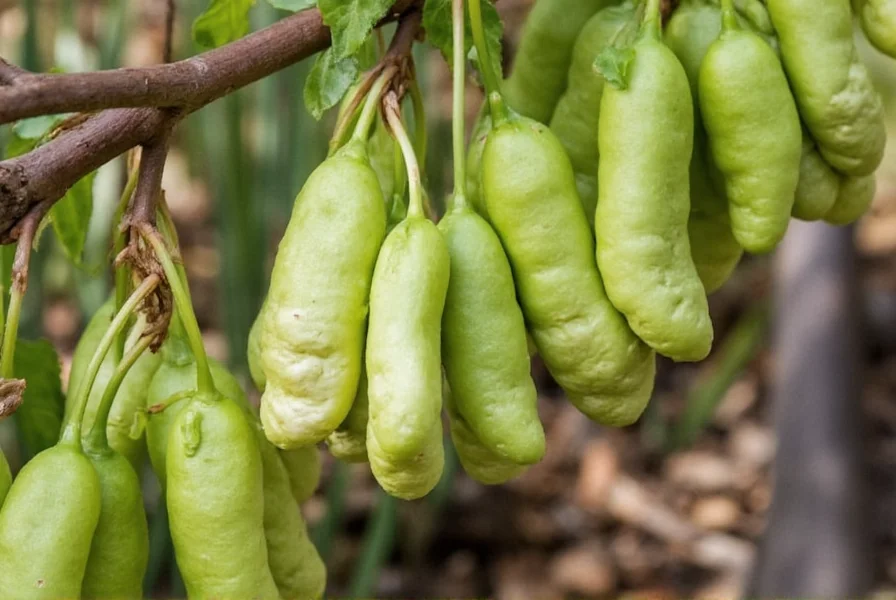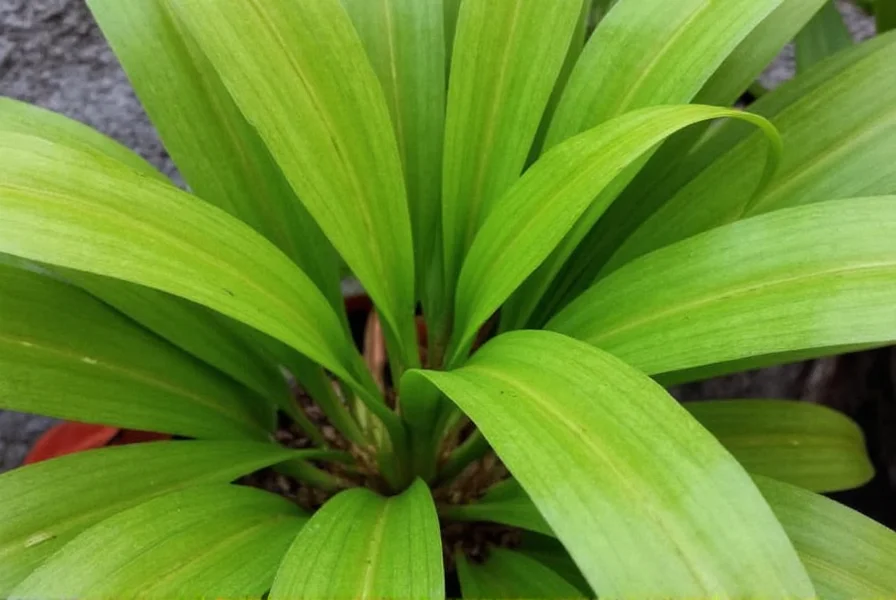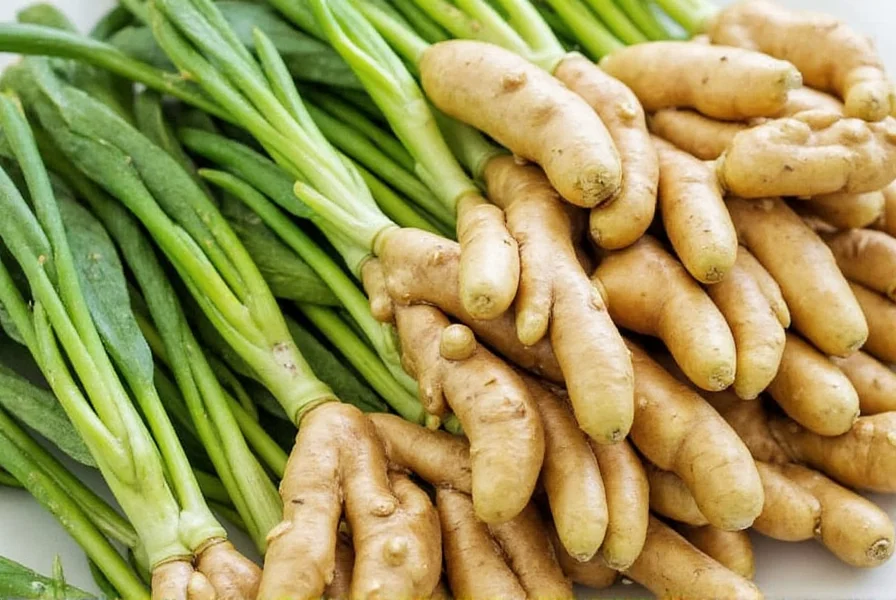Understanding Ginger Plant Biology for Successful Cultivation
Ginger isn't actually a root but a rhizome—a horizontal underground stem that stores nutrients and produces new shoots. This biological understanding is crucial for proper growing of ginger because it affects how you plant, harvest, and propagate your crop. Unlike true roots, ginger rhizomes have 'eyes' or growth buds that develop into new stems. When selecting planting material, look for plump rhizomes with multiple visible eyes, as these will produce more vigorous plants.
Ginger belongs to the Zingiberaceae family, which includes turmeric and cardamom. It's a tropical plant native to Southeast Asia that grows best in USDA zones 9-12 but can be cultivated indoors in cooler climates. The plant typically reaches 2-4 feet in height with narrow green leaves and, under ideal conditions, produces beautiful yellow-flowered spikes. However, most home growers cultivate ginger specifically for its valuable rhizomes rather than ornamental value.

Selecting Quality Ginger Rhizomes for Planting
The foundation of successful how to grow ginger at home begins with selecting quality planting material. While grocery store ginger might seem convenient, it's often treated with growth inhibitors and may not sprout reliably. For best results, source organic ginger rhizomes from:
- Specialty gardening suppliers
- Local farmers markets (during spring)
- Online seed catalogs specializing in tropical plants
- Dividing established plants from fellow gardeners
When evaluating potential planting material, look for:
| Quality Indicator | What to Look For | What to Avoid |
|---|---|---|
| Texture | Firm, plump rhizomes | Shriveled or rubbery texture |
| Color | Vibrant yellow-tan skin | Dark spots or mold |
| Eyes/Buds | Multiple visible growth points | No visible eyes or growth points |
| Moisture | Slightly moist but not wet | Excessively dry or waterlogged |
Before planting, you can encourage sprouting by placing rhizomes in a warm, humid location for 1-2 weeks. Some gardeners recommend soaking rhizomes in lukewarm water overnight to remove potential growth inhibitors.
Creating the Ideal Growing Environment
Successful organic ginger cultivation methods depend heavily on replicating the plant's natural tropical habitat. Ginger requires specific environmental conditions to thrive:
Climate Requirements
Ginger grows best in temperatures between 71-77°F (22-25°C) with high humidity (70-80%). It cannot tolerate frost and growth slows significantly below 50°F (10°C). In temperate climates, grow ginger as a seasonal crop during warm months or as a permanent indoor plant.
Soil Preparation for Optimal Growth
The best soil for ginger plants is loose, well-draining, and rich in organic matter. Create an ideal growing medium by:
- Mixing equal parts garden soil, compost, and perlite or coarse sand
- Adding well-rotted manure for additional nutrients
- Maintaining a slightly acidic to neutral pH (5.5-7.5)
- Ensuring excellent drainage to prevent rhizome rot
Ginger has shallow roots, so soil preparation doesn't need to be deep—8-12 inches is sufficient. Raised beds work exceptionally well for growing ginger in containers or garden plots as they improve drainage.
Light Requirements
Contrary to popular belief, ginger doesn't require full sun. In its natural habitat, it grows as an understory plant. Provide:
- 2-5 hours of morning sun with afternoon shade
- Filtered light through tree canopies
- Indoors: Bright, indirect light near east or north-facing windows
- Avoid harsh afternoon sun which can scorch leaves
Step-by-Step Planting Guide
Follow these steps for successful step by step ginger growing guide implementation:
Timing Your Planting
Plant ginger rhizomes in early spring after the last frost when soil temperatures reach at least 60°F (15°C). In tropical climates, plant at the beginning of the rainy season. For indoor cultivation, you can plant year-round.
Planting Process
- Break rhizomes into 1-2 inch pieces, each with 1-2 growth eyes
- Allow cut surfaces to dry for 24-48 hours to form a protective callus
- Dig shallow trenches 2-4 inches deep
- Place rhizomes with eyes facing up, spacing 8-12 inches apart
- Cover with 1-2 inches of soil and water gently
- Mulch with straw or leaf mold to retain moisture

Container Growing Options
Growing ginger in containers is ideal for limited spaces and colder climates. Choose pots that are:
- At least 12 inches deep and 14-18 inches wide
- With excellent drainage holes
- Filled with the soil mix described earlier
- Placed in areas with appropriate light conditions
Container-grown ginger requires more frequent watering but offers the advantage of being movable to optimal conditions throughout the growing season.
Care and Maintenance Throughout the Growing Season
Proper care ensures healthy growth and maximum rhizome development for your growing of ginger project.
Watering Requirements
Ginger plant watering requirements are specific and critical:
- Keep soil consistently moist but never waterlogged
- Water when top inch of soil feels dry
- Increase frequency during hot, dry periods
- Reduce watering as harvest approaches (last 2-3 months)
- Morning watering prevents fungal issues
Overwatering causes rhizome rot, while underwatering stunts growth. Container plants typically need watering every 2-3 days during peak growth.
Fertilization Strategy
Feed ginger plants every 4-6 weeks with a balanced, organic fertilizer. During early growth, use nitrogen-rich formulas to promote leaf development. As rhizomes begin forming (around 4 months), switch to phosphorus and potassium-rich fertilizers to encourage rhizome development.
Pest and Disease Management
Ginger is relatively pest-resistant but can encounter:
- Rhizome rot: Prevent with proper drainage and avoid overwatering
- Leaf spot: Remove affected leaves and improve air circulation
- Root knot nematodes: Rotate crops and use resistant varieties
- Scale insects: Treat with insecticidal soap if infestation occurs
Organic prevention methods work best for organic ginger cultivation methods. Regularly inspect plants and address issues promptly before they spread.
Harvesting and Storage Techniques
Knowing when to harvest ginger rhizomes is crucial for optimal flavor and storage potential.
Harvest Timing Indicators
Full harvest occurs 8-10 months after planting when:
- Leaves begin yellowing and dying back
- Stems become dry and brittle
- Rhizomes have developed a rich, golden color
- Outer skin becomes firm and less smooth
For fresh ginger use, you can harvest small amounts earlier by carefully digging around the edges of the plant and removing only what you need, allowing the plant to continue growing.
Harvesting Process
- Stop watering 1-2 weeks before harvest to dry the soil slightly
- Carefully dig around the plant perimeter with a garden fork
- Lift the entire plant with attached rhizomes
- Shake off excess soil (don't wash immediately)
- Cut stems back to 1 inch above rhizomes
- Cure in a warm, dry, shaded location for 3-7 days
Storage Methods
Properly stored ginger rhizomes can last:
- Refrigerator: 3-4 weeks in a paper bag in the crisper drawer
- Freezer: Up to 6 months when sliced and frozen
- Dry storage: 1-2 months in a cool, dark place with good ventilation
- Pickling: Several months in vinegar-based solutions
Troubleshooting Common Growing Problems
Address these frequent issues with troubleshooting ginger plant issues:
Yellowing Leaves
Cause: Overwatering, nutrient deficiency, or excessive sun exposure
Solution: Adjust watering schedule, test soil nutrients, provide more shade
Poor Rhizome Development
Cause: Insufficient nutrients, overcrowding, or premature harvesting
Solution: Fertilize appropriately, ensure proper spacing, allow full maturation
Rhizome Rot
Cause: Poor drainage, overwatering, or fungal infection
Solution: Improve soil drainage, reduce watering, remove affected rhizomes
Slow Growth
Cause: Cool temperatures, insufficient light, or poor soil quality
Solution: Move to warmer location, adjust light exposure, amend soil
Advanced Techniques for Better Yields
Once you've mastered the basics of growing of ginger, try these advanced methods:
- Successive planting: Plant new rhizomes every 4-6 weeks for continuous harvest
- Propagation: Save healthy rhizome pieces from harvest for next season's planting
- Varietal selection: Experiment with different ginger varieties for unique flavors
- Indoor winter growing: Bring container plants indoors before first frost
- Companion planting: Grow with turmeric or galangal for efficient space use
For those interested in indoor ginger plant care year-round, maintain consistent temperatures above 60°F (15°C), provide bright indirect light, and reduce watering during winter dormancy periods.











 浙公网安备
33010002000092号
浙公网安备
33010002000092号 浙B2-20120091-4
浙B2-20120091-4